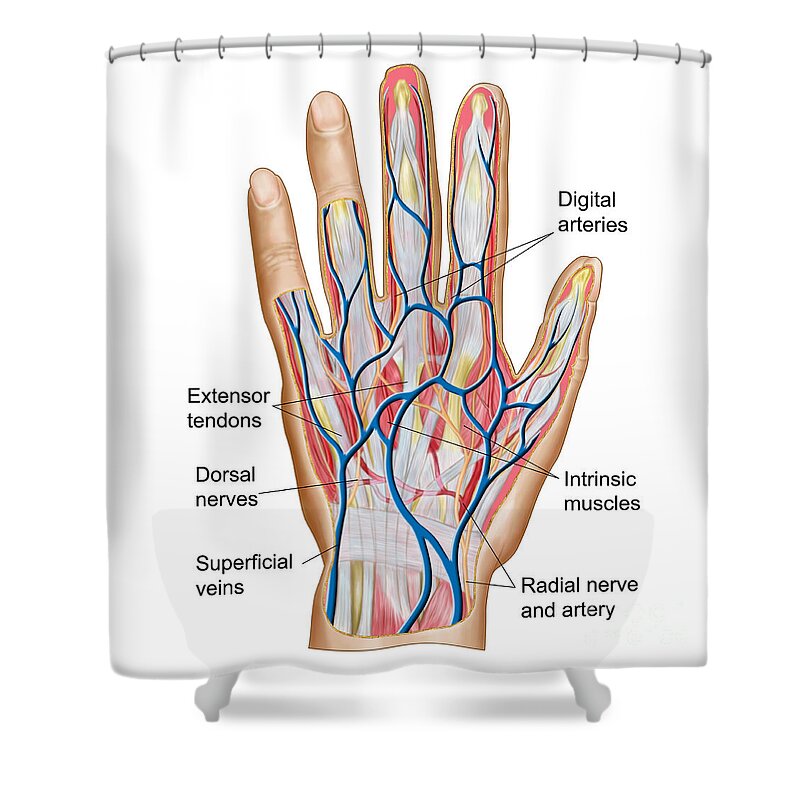The complex abilities of the hand are part of what make humans unique. Only humans have the ability to bring our thumbs across the hand to connect with our ring and pinkie fingers. A hand is a prehensile, multi-fingered appendage located at the end of the forearm or forelimb of primates such as humans, chimpanzees, monkeys, and lemurs. A few other vertebrates such as the koala (which has two opposable thumbs on each hand and fingerprints extremely similar to human fingerprints) are often described as having hands instead of paws on their front limbs. Clinical Anatomy - Lower Limb (Bones), Inguinal ligament, Hip, Knee and ankle Joints - Duration: 16:33.

It is made up of the wrist joint, the carpal bones, the metacarpal bones, and the phalanges. Andrew Chung Comments. The wrist links the hand to the forearm. The carpal bones are arranged in interrelated rows. It is strong enough to allow climbers to tackle any mountain, but also sufficiently precise for the manipulation of some of the world’s smallest objects and the performance of complex actions.
The upper extremity is a term used to define the upper limb. The hand is a very complex part of the body, and all of the parts of the upper extremity are essential to functioning hands. The bones of the hand and wrist provide the body with support and flexibility to manipulate objects in many different ways.
Each hand contains distinct bones that give the hand an incredible range and precision of motion. The forearm’s ulna and radius support the many muscles that manipulate the bones of the hand and wrist. Each contributes to specific functions, to provide the body structure and its co-existence in the biosphere with much-needed mobility.
The human anatomy comprises a number of complex systems. The anatomy of the human hand is a marvel, by way of construction as well as function. All five metacarpals together are recognized as the metacarpus. Wrist, palm, and fingers are thus made up of several small joints. All small carpal bones join the bones lying next to them, and thus make the anatomy of the human hand very complex.

Few structures of the human anatomy are as unique as the hand. The hand needs to be mobile in order to position the fingers and thumb. Adequate strength forms the basis for normal hand function.
The hand also must be coordinated to perform fine motor tasks with precision. We use our hands in performing so many minor as well as major activities. But we hardly wonder how this part of our body works. Like a human body, the human hand also consists of certain types of bones that provide strength and flexibility to it.
Hand Bones Anatomy and Structure. There are three types of bones that comprise our hands. What makes the human hand unique in the animal kingdom is the ability of the small and ring fingers to rotate across the palm to meet the thumb, owing to a unique flexibility of the carpometacarpal joints of these fingers, down in the middle of the palm. The following outline is provided as an overview of and topical guide to human anatomy:.
Human anatomy – scientific study of the morphology of the adult human. It is subdivided into gross anatomy and microscopic anatomy. Gross anatomy (also called topographical anatomy, regional anatomy, or anthropotomy) is the study of anatomical structures that can be seen by unaided vision. Find human hand anatomy stock images in HD and millions of other royalty-free stock photos, illustrations and vectors in the Shutterstock collection. Thousands of new, high-quality pictures added every day.
Human hand anatomy anterior view diagram from plenty of anatomical pictures on the internet. We think this is the most useful anatomy picture that you need. You can click the image to magnify if you cannot see clearly.
The BioDigital Human is a virtual 3D body that brings to life thousands of medically accurate anatomy objects and health conditions in an interactive Web-based platform. This image added by admin. The back of the hand is formally called the dorsum of the hand.
The uniqueness of the human han as compared to the other animals comes from the fact that all the fingers are independent of each other and the thumb can make contact with each finger.
Hiç yorum yok:
Yorum Gönder
Not: Yalnızca bu blogun üyesi yorum gönderebilir.